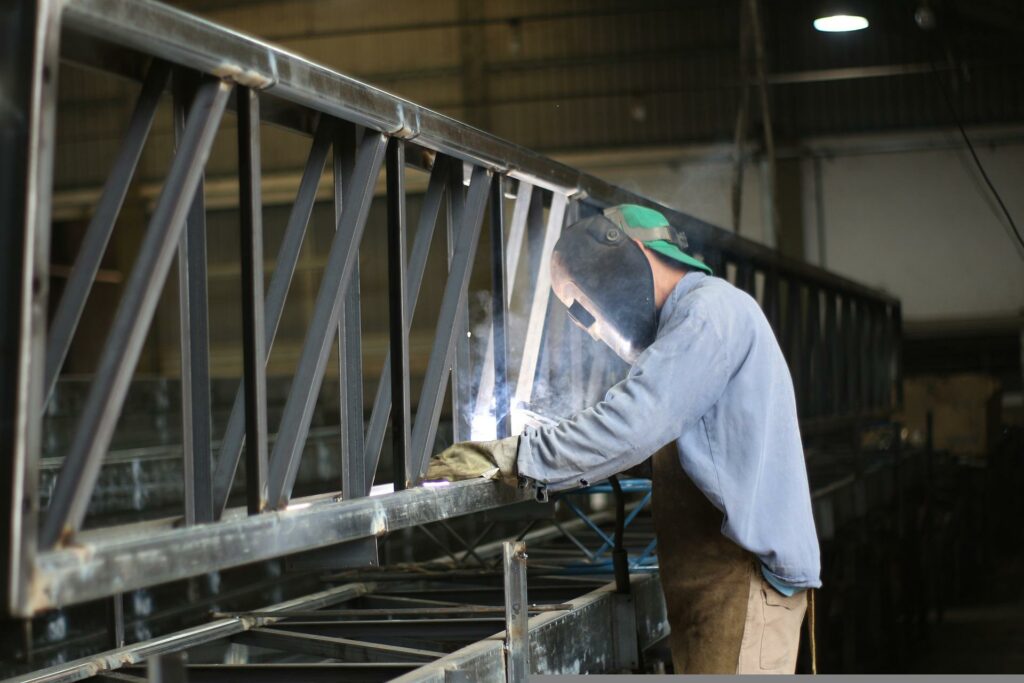Field Verifications for Custom Metal Projects

As the nation’s leading manufacturer of unique metal products, Patriot Custom Metals continues to develop effective methods for ensuring the items we engineer meet the needs of the user. After all, the ideal custom product doesn’t merely function and give off an attractive aesthetic; it also accommodates its place of installation. (What good is a custom gate, ornate railing, or metal artwork if it cannot be properly installed due to incompatible design?) To avoid this situation and achieve the best results, we need some help from you, the client. Our expert staff still does the heavy lifting (design, fabrication, installation), but we need information from you regarding what comes before—namely field dimensions.
What is field verification and why is it important for manufacturing my product?
Field verification is a part of the fabrication process that becomes essential when site conditions cannot be easily predicted by the designer or in situations featuring complexity not adequately represented in drawings. (The custom metals industry has been challenged for years in properly taking and interpreting field dimensions for CAD fabrication drawings.) Obtaining field dimensions requires physical measurements of the most minute detail, which are necessary for many reasons:
- Blueprints don’t yield reliable field dimensions. As mentioned above, field dimension measurements need to be as precise as possible; for this reason, you cannot rely on building blueprints to get your dimensions. The measurements found in blueprints are not always exact—especially if the project area has since undergone renovation. The last thing you want is to put together field dimensions based on blueprints, then pay for a manufactured product, only to discover it won’t fit or function because of—for instance—slight elevation changes.
- Measurements may require complicated processes not always apparent. For instance, paving may appear level to the human eye, but any experienced construction worker knows that most areas are sloped at least one percent for drainage purposes. In other instances, what may look like a large radius on your deck or patio could actually be a combination of radii or a radius that changes as you travel along the area’s circumference. This is another reason not to trust blueprints and to conduct actual, physical measurements.
- A fraction of an inch can make a world of difference. Here is a prime example of why your field dimensions need to be as precise as possible. If you want to install a product with continued dimensions (say, a custom fence with equidistant posts) and if you’re off on the placement of the posts by even a fraction of an inch, that same error will affect the corresponding posts, as well. This in turn can result in the item’s total length being off a few whole inches—potentially preventing the product from fitting its project area.
How do I take field verification measurements for my custom metals project?
Managing these challenges, the custom metals industry has developed techniques for taking field verifications. Every good field verification technique starts with some common denominators. The most important of which is establishing a benchmark. Whether taking elevations or measuring a series of arcs, establishing a benchmark is critical to achieving accurate dimensions. It is also necessary that you establish a point of reference as to whether you are working north to south, east to west, inside looking out, etc. Many custom railings and gates have been mis-manufactured because the designer misinterpreted the point of reference from where the dimensions were taken.
Patriot Custom Metals has captured some of these more common techniques in a series of How-Tos for our customers to communicate dimensions to us.
- How To Verify Field Arcs
- How To Field Verify Post Column Layouts
- How to Field Verify Stairs
- How to Find a Radius or Radii
When you hire Patriot Custom Metals to design a unique product, designs are approved by you before the actual fabrication process begins. So when we receive the field dimensions and all other information we need, we’ll produce complete drawings for you to review. Only when you’ve given your approval will we start manufacturing your item.